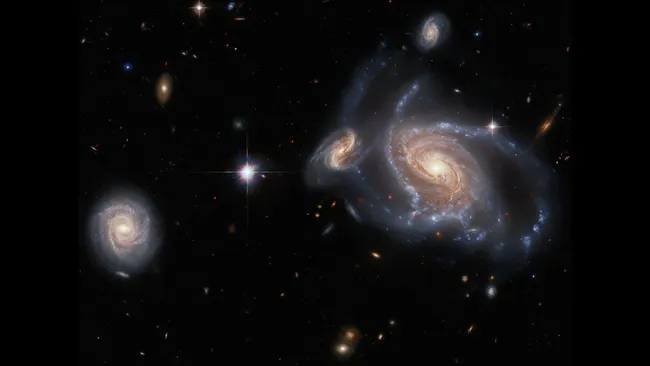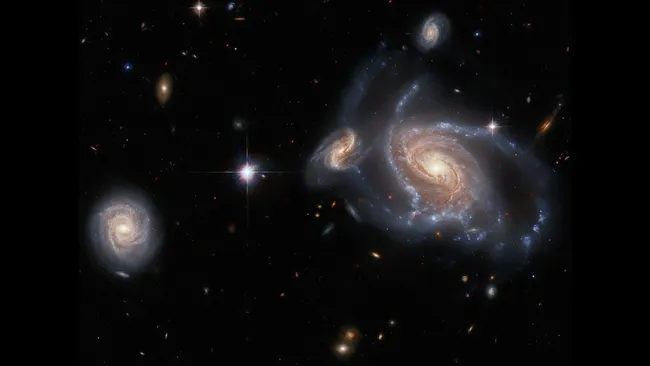The Hubble Space Telescope Discovers a Celebratory Assembly of Spiral Galaxies (Image)
The released picture on Christmas Day exhibits a vast spiral galaxy surrounded by smaller galaxies of similar shape.
The Hubble Space Telescope caught sight of a gathering of spiral galaxies, situated at different distances from Earth, coming together to form an astonishing festive image unveiled on Christmas Day.

In this Hubble Space Telescope image taken on Monday (Dec. 25), the most significant galaxy visible on the right-hand side is NGC 1356. Positioned 550 million light-years away in the Horologium constellation, this spiral galaxy dominates the scene.
Accompanying NGC 1356 in the picture are several seemingly smaller galaxies with akin spiral structures. Positioned above the central galaxy is LEDA 467699, while immediately to its left sits LEDA 95415. On the far left of this trio lies another cluster of stars known as IC 1947.
The image from Hubble serves as a compelling illustration of how appearances in space can be misleading. Despite the impression of proximity between these galaxies—particularly the apparent interaction between NGC 1356 and LEDA 95415—they are actually widely separated in the vast expanse of the universe.
This image exemplifies the challenge of representing the three-dimensional expanse of the universe in a two-dimensional picture, highlighting the Hubble’s remarkable ability to capture galaxies spanning various distances.
While NGC 1356 resides between 500 million and 600 million light-years away from Earth, the galaxy that seems to be in celestial conversation with it exists at a significantly greater distance. LEDA 95415 is situated 840 million light-years away, establishing a considerable gap of about 290 light-years between these galaxies—a notable distance considering the closest star system to Earth lies approximately four light-years away.
The apparent diminutiveness of LEDA 95415 in the Hubble image compared to NGC 1356 could be attributed to their vast separation. In reality, these spiral galaxies are likely to be much more similar in size than depicted in the image.
Despite the apparent distant placement of NGC 1356 and IC 1947 in the festive Hubble image, these galaxies are closer in reality than their 2D representation suggests. IC 1947 sits roughly around 500 million light-years away, a distance comparable to NGC 1356.
Furthermore, the seemingly wide horizontal distance between NGC 1356 and IC 1947 in the Hubble picture translates to only about 400,000 light-years—a detail indicating a much closer cosmic relationship between these galaxies than between NGC 1356 and LEDA 95415.
Do not forget to share your opinion with us to provide you with the best posts !




0 Comments